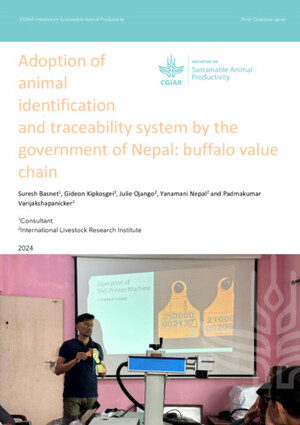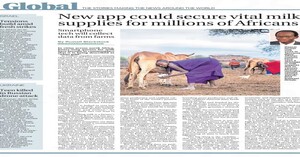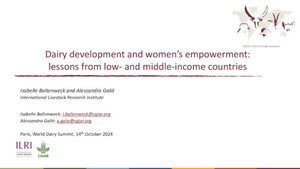
Assessment of milk quality and food safety challenges in the complex Nairobi dairy value chain
Abstract
Food networks present varying food safety concerns because of the complexity of interactions, production, and handling practices. We investigated total bacteria counts (TBCs) and total coliform counts (TCCs) in various nodes of a Nairobi dairy value chain and identified practices that influence food safety. A value chain analysis framework facilitated qualitative data collection through 23 key informant interviews and 20 focus group discussions. Content thematic analysis identified food safety challenges. Cow milk products (N = 290) were collected from farms (N = 63), collection centers (N = 5), shops/kiosks (N = 37), milk bars (N = 17), roadside vendors (N = 14), restaurants (N = 3), milk vending machines (N = 2), mobile traders (N = 2) and a supermarket (N = 1). Mean values of colony-forming units for TBC and TCC were referenced to East African Standards (EAS). Logistic regression analysis assessed differences in milk acceptability based on EAS. The raw milk from farms and collection centers was relatively within acceptable EAS limits in terms of TBC (3.5 × 105 and 1.4 × 106 respectively) but TCC in the milk from farms was 3 times higher than EAS limits (1.5 × 105). Compared to farms, the odds ratio of milk acceptability based on TBC was lower on milk bars (0.02), restaurants (0.02), roadside vendors (0.03), shops/kiosks (0.07), and supermarkets (0.17). For TCC, the odds that milk samples from collection centers, milk bars, restaurants, roadside vendors, and shops/kiosks were acceptable was less than the odds of samples collected from farms (0.18, 0.03, 0.06, 0.02, and 0.12, respectively). Comparison of raw milk across the nodes showed that the odds of milk samples from restaurants, roadside vendors, and shops/kiosks being acceptable were less than the odds of samples collected the farm for TBC (0.03, 0.04, and 0.04, respectively). For TCC, the odds of raw milk from collection centers, restaurants, roadside vendors, milk bars, and shops/kiosks being acceptable were lower than the odds of acceptability for the farm samples (0.18, 0.12, 0.02, 0.04, and 0.05, respectively). Practices with possible influence on milk bacterial quality included muddy cowsheds, unconventional animal feed sources, re-use of spoilt raw milk, milk adulteration, acceptance of low-quality milk for processing, and lack of cold chain. Therefore, milk contamination occurs at various points, and the designing of interventions should focus on every node.
Citation
Kiambi, S., Fèvre, E.M., Alarcon, P., Gitahi, N., Masinde, J., Kang'ethe, E., Aboge, G., Rushton, J. and Onono, J.O. 2022. Assessment of milk quality and food safety challenges in the complex Nairobi dairy value chain. Frontiers in Veterinary Science 9: 892739.










